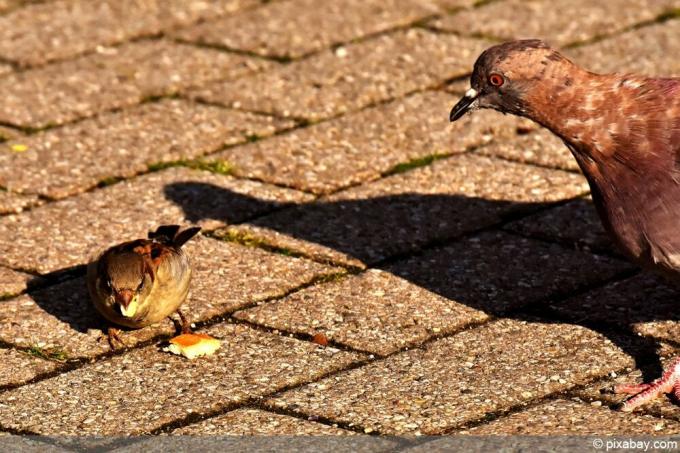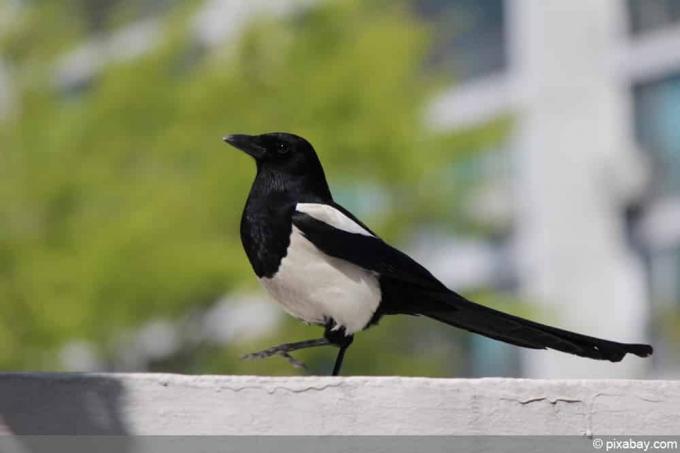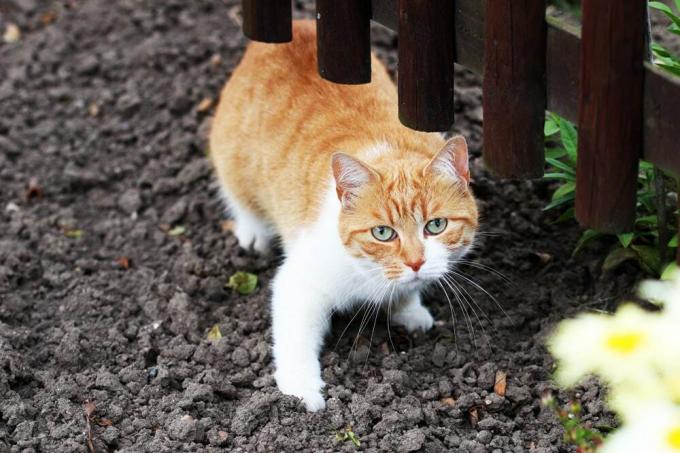

Table of contents
- PROFILE - Sparrow
- No place for sparrows
- Damage from the sparrow's nest
- preventive measures
- Remove sparrow nest?
- Gently drive away sparrows
- Living together
- Frequently Asked Question
Sparrows are the world's most common songbird species. They have adapted to the way of life of humans and populate the residential areas. What can you do if
PROFILE - Sparrow
- House Sparrow (Passer domesticus)
- Size: 16 centimeters
- Characteristics: large head, powerful beak
- Males: brown stripes on sides of head, black throat, gray top of head
- Females: dull brown
- Food: Grains, seeds, young birds are fed with insects
No place for sparrows
House sparrows are where people live. In the past centuries they have adapted to the human way of life as so-called culture followers. In barns and stables, under overhanging shingle or thatched roofs, they have so far found sufficient nesting opportunities. Their menu was always full, because they found enough food in rural agriculture. In the past few decades, people's lives have changed significantly. Large cities pushed out the rural structures, modern houses offer only few possibilities for nest building.

Almost unnoticed, the sparrow population increased as a result of the industrialization of agriculture at the beginning of the 20th century. century has decreased significantly. But sparrows are adaptable. When sparrows breed under the roof, the children are happy about the chirping visit. However, homeowners fear damage and dirt on the house. What can you do? Is a gentle expulsion or even a conversion of the sparrow's nest possible?
House sparrows need buildings to build their nests. They build their nests at a height of three to ten meters:
- under the roof tiles
- in cavities between roof battens
- behind the gutter
The creative birds also use to build nests
- Woodpecker holes in thermally insulated facades
- Rooms behind company signs
- cavities on neon signs
Damage from the sparrow's nest
Homeowners' fears are not unfounded. A sparrow's nest on the house can lead to damage to the building fabric. The sparrow rarely comes alone. The birds live in colonies and build their nests as close together as possible. When a pair of sparrows has found a nesting site near your home, other sparrows will follow suit.
There is damage to the house:
- pollution from bird droppings
- Volume of chirping sparrows near the window
- damage to the facade
preventive measures
If you want to protect your house from damage, you can prevent nest building with our tips.
- Seal up damaged areas in the house. Pay particular attention to places under the eaves.
- Have the condition of the roof checked regularly by experts. In the process, loose roof tiles and loose roof battens are identified, which offer the opportunity to build nests.
- Do not leave leftover food or food bowls on your property.
Remove sparrow nest?
Removing a sparrow's nest is not a good idea! The Federal Nature Conservation Act prohibits the destruction of breeding and breeding grounds for wild animals. The lower nature conservation authority in your district will answer your questions and, if necessary, issue special permits.

exemptions are possible, at:
- several sparrow nests at the house
- dangers of playing children
- residents with allergies
- Risk of significant building damage
Danger:
Anyone who removes or removes a sparrow's nest without permission destroying the clutch or killing young birds will be punished with a fine.
Gently drive away sparrows
There are several ways to prevent house sparrows from building their nests under the roof.
1. bird dummies
Sparrows are on the menu of birds of prey. Buzzards, owls and jays pose a threat to the small songbirds. Fake birds on the roof can help scare away house sparrows. Be sure to move the dummy every now and then. Otherwise, the birds will recognize the trick and simply build their nest next to it.
2. Sounds
Played birdcalls of various birds of prey can help reduce the building's attractiveness to sparrows.
3. Reflective discs
The sparrow is sensitive to reflective discs and ribbons. Anyone who attaches these commercially available bird deterrents near suitable breeding sites is initially safe from unwanted visitors. But the protection doesn't last long. Sparrows soon realize that there is no danger from the flashing discs and ignore them.
4. Ultrasonic
Repelling animals in the garden with ultrasonic devices is a popular method. It is used against cats, martens, raccoons, but also against sparrows. It is questionable whether the investment in these devices is really worthwhile.
5. wind chimes
Wind chimes are often placed in the garden as decoration but also to drive away birds. They are available in different variations.
6. spikes
Spikes on the roof are used to deter birds. The strips, which have metal or plastic tips, are glued, nailed or riveted to the roof. They are mainly used to drive away pigeons, special versions help to prevent swallows or sparrows from settling there.
Living together

Before you use your strength to drive away sparrows, examine the possibilities for peaceful coexistence. Is the nesting site chosen by the sparrow couple really disturbing? Attach a dropping board to protect the facade. The little birds are fascinating. Enjoy watching the sparrows rearing their young. Experience the calls of the hungry young birds and their first flight. Perhaps this experience alone is enough to compensate for the impairments?
Frequently Asked Question
The reason for this is the love of the little bird for the dust bath. Many people know the image of the little sparrow bathing in the dirt on the dusty dirt road. This bath helps the birds drive vermin out of their plumage.
 Home editorial office
Home editorial office
Learn more about animal defense

Bird repellent: with these means you drive birds away from the balcony
Pigeons, sparrows and many other bird species often choose a balcony as a resting or even nesting place in the city. However, to ensure that your own balcony is spared bird droppings in particular, there are various measures that can be used effectively here without harming the animals.

Scare away foxes from the garden and keep them away
Whether in the city or in the country - more and more hobby gardeners meet foxes in their own green kingdom and ask themselves how they can scare them away. We have summarized which measures are best suited for this in this article!

Prevent birds under roof tiles and roof overhang
If birds settle under the roof tiles and the roof overhang, this can lead to damage to the building fabric. The droppings cause unsightly dirt, and breeding songbirds make a lot of noise. Various countermeasures have proven effective in preventing unwanted colonization.

Recognizing magpie droppings | Magpie droppings with picture
Bird droppings on the terrace or on the light wall of the house are a nuisance. What culprit is behind this? Was it the magpies? We'll show you how to spot magpie droppings and how to get rid of them.

Recognize badger droppings in the garden: 6 characteristics
Have you ever seen a badger in the wild? The animals with the black stripes on their faces are common in German forests. She is increasingly drawn to the city. Their legacies are annoying. How can badger droppings be identified?

Cat plague in the garden - what to do?
In your own garden or sandpit, strange cats are sometimes among the uninvited guests when they do their business there or dig up plants. We will show you a few gentle methods against a cat plague, with which you can drive the animals away in a species-appropriate manner.



